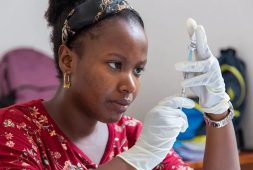
In a recent publication in the International Journal of Behavioral Nutrition and Physical Activity, researchers delved into the connection between physical inactivity during early childhood and its potential impact on the mental health of middle-aged children.
Background:
Over 50% of mental health disorders manifest before the age of 14, emphasizing the importance of preventive measures during childhood.
Engaging in sports and moderate to vigorous physical activities (MVPA) has been recognized for its positive influence on cognition and mental health, altering brain structure and functionality. Physical activity also facilitates the release of endorphins, contributing to pain relief, euphoria, reduced depression, and overall well-being.
Another well-established proposition posits that physical activity contributes to enhanced mental health in children by inducing behavioral changes. It augments energy expenditure, thereby improving both the volume and pattern of sleep, while concurrently alleviating cognitive deficits associated with insufficient sleep. Additionally, active participation in physical activities and sports fulfills fundamental psychological needs, fostering social connectedness, bolstering self-esteem, and facilitating the attainment of life goals.
Systemic reviews, exemplified by the work of Peng et al,. have indicated that a physical activity intervention may offer moderate improvements in depression among adolescents aged 12 – 18 Similarly, findings from Hale and his colleagues affirm the positive impact of such interventions on the mental health of 6 to 11-year-olds, although clarification on whether they mitigate overall ill-being in children remains elusive.
Despite numerous studies proposing the beneficial effects of physical activity on mental health outcomes in children, the existing findings exhibit inconsistency. Therefore, there is a pressing need for additional studies utilizing device-based assessments of physical activity to enhance the overall quality of research. Furthermore, given the considerable developmental changes occurring in the brain during the ages of 6 – 11, it becomes imperative to identify the nuanced effects of physical activity on psychological outcomes in middle-aged children.
The Study:
The research focused on children aged 5 – 6 and 10 – 11 years, aiming to explore whether device-based physical activity assessments in early childhood could predict mental health outcomes in later childhood. Utilizing the ActiGraph GT3X accelerometer for physical activity and sedentary time data, the study involved 1,070 children with valid physical activity data, of which 850 provided valid responses to the Strengths and Difficulties Questionnaire (SDQ).
In this study, researchers enlisted children aged 5 – 6 and 10 – 11 years, assessing their physical activity, sedentary time, and subsequent SDQ measurements. The objective was to investigate whether early childhood device-based physical activity assessments could serve as predictors for later childhood mental health.
For the collection of physical activity and sedentary time data, the ActiGraph GT3X accelerometer was employed. Participants wore the accelerometer on their right hip for four days during waking hours, including at least one weekend day. Operating at a 30 Hz frequency, the accelerometer gathered comprehensive data, aiding researchers in computing both the volume and intensity of physical activity.
Additionally, mental health assessments were conducted using the Strengths and Difficulties Questionnaire (SDQ). Parents of participating children were requested to complete the SDQ, encompassing five sub-scales. Scores from all sub-scales, including hyperactivity/inattention, behavioral problems, peer problems, and emotional problems (excluding prosocial behaviors), were aggregated to calculate total difficult scores. Height and weight measurements, assessed by trained nurses, were utilized to compute each child’s body mass index (BMI).
To analyze the associations between physical activity, sedentary time, and SDQ subscales, the research team employed multiple linear regression models. The findings were stratified by gender, and adjustments were made for variables such as age, BMI, family size, maternal education, and accelerometer wear time. Furthermore, the researchers factored in SDQ scores obtained at age 5 – 6 to facilitate the tracking of mental health changes over time.
Results:
Out of 1,070 children with valid physical activity data, only 850, aged 10 – 11 (comprising 438 boys and 412 girls), provided a valid SDQ questionnaire. Data revealed that among all children aged 5 – 6 years, boys displayed higher physical activity levels than girls, although the total accelerometer wear tie for both genders was comparable.
The team evaluated the physical activity in children with an average age of 5.11 ± 0.89 years. Subsequently, they conducted the initial and subsequent SDQ measurements in children with an average age of 5.11 ± 0.39 years and 10.57 ± 0.55 years, respectively.
Results indicated that increased physical activity levels among children aged 5 – 6 were associated with lower peer problem scores at ages 10 – 11 in both boys and girls. Conversely, sedentary time at age 5 – 6 led to increased peer problem scores at age 10 – 11. Adjustments for SDQ scores at age 5 – 6 did not alter the relationship between MVPA and peer issues. Higher MVPA and less sedentary time were linked to increased hyperactivity scores in boys (but no girls) and weakened after adjusting for hyperactivity scores at age 5 – 6.
Participation in sports plays a crucial role in developing social skills and enhancing social competence, potentially preventing the emergence of peer-related issues. Children naturally gravitate toward peers with similar behaviors, such as engaging in the same sports, justifying the positive impact of MVPA on boys’ peer relationships in this study.
The study’s results also highlighted the positive influence of MVPA at age 5 – 6 on girls’ peer relationships at age 10 – 11, providing evidence to support encouraging young girls to engage in sports from early childhood. This approach may contribute to promoting equal opportunities for girls to enjoy MVPA from an early age.
While athletic ability and sports participants enhance the popularity and social recognition of boys, girls may not feel the same pressure to participate in sports to shape their peer relationships. However, future research should delve into how sedentary behaviors can impact the mental health of all children, irrespective of gender.
A meta-analysis revealed that children with attention deficit/hyperactivity disorder (ADHD) tend to exhibit higher MVPA levels than other children, potentially causing the actigraph to overestimate physical activity in these cases. Consequently, actigraph-assessed physical activity levels in this study did not provide protection against hyperactive symptoms.
Similarly, studies documenting physical activity volume and intensity via questionnaires could yield discrepant or inconsistent findings because individuals (in most cases) struggle to accurately recall those parameters.
Conclusion:
This study illuminates the intricate interplay between early childhood physical activity, sedentary time, and subsequent mental health outcomes in middle-aged children. Understanding these relationships provides valuable insights for developing targeted strategies to enhance mental health in children.
The findings emphasize the importance of promoting physical activity from an early age, offering potential avenues for interventions and support tailored to specific gender-related mental health challenges.



